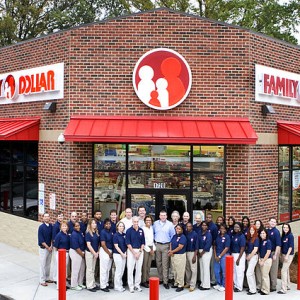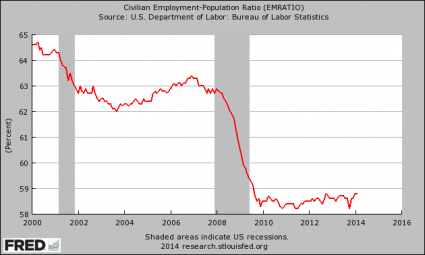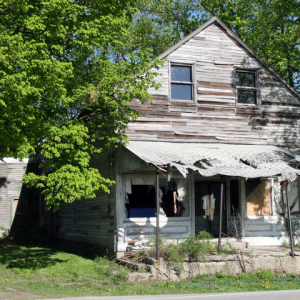 If the economy really is “getting better”, then why are nearly 50 million Americans dealing with food insecurity? In 1854, Henry David Thoreau observed that “the mass of men lead lives of quiet desperation”. The same could be said of our time. In America today, most people are quietly scratching and clawing their way from month to month. Nine of the top ten occupations in the U.S. pay an average wage of less than $35,000 a year, but those that actually are working are better off than the millions upon millions of Americans that can’t find jobs. The level of employment in this nation has remained fairly level since the end of the last recession, and median household income has gone down for five years in a row. Meanwhile, our bills just keep going up and the cost of food is starting to rise at a very frightening pace. Family budgets are being squeezed tighter and tighter, and more families are falling out of the middle class every single day. In fact, a new report by Feeding America (which operates the largest network of food banks in the country) says that 49 million Americans are “food insecure” at this point. Approximately 16 million of them are children. It is a silent epidemic of hunger that those living in the wealthy areas of the country don’t hear much about. But it is very real.
If the economy really is “getting better”, then why are nearly 50 million Americans dealing with food insecurity? In 1854, Henry David Thoreau observed that “the mass of men lead lives of quiet desperation”. The same could be said of our time. In America today, most people are quietly scratching and clawing their way from month to month. Nine of the top ten occupations in the U.S. pay an average wage of less than $35,000 a year, but those that actually are working are better off than the millions upon millions of Americans that can’t find jobs. The level of employment in this nation has remained fairly level since the end of the last recession, and median household income has gone down for five years in a row. Meanwhile, our bills just keep going up and the cost of food is starting to rise at a very frightening pace. Family budgets are being squeezed tighter and tighter, and more families are falling out of the middle class every single day. In fact, a new report by Feeding America (which operates the largest network of food banks in the country) says that 49 million Americans are “food insecure” at this point. Approximately 16 million of them are children. It is a silent epidemic of hunger that those living in the wealthy areas of the country don’t hear much about. But it is very real.
The mainstream media and our politicians continue to insist that “things are getting better”, and that may be true for Wall Street, but the man who was in charge of the new Feeding America report says that the level of suffering for the tens of millions of Americans that are food insecure has not changed…
“Nothing is getting better,” said Craig Gundersen, lead researcher of the report, “Map the Meal Gap 2014,” and an expert in food insecurity and food aid programs.
“Let’s stop talking about the end of the Great Recession until we can make sure that we get food insecurity rates down to a more reasonable level,” he added. “We’re still in the throes of the Great Recession, from my perspective.”
In fact, a different report seems to indicate that hunger in America is actually getting worse…
Children’s HealthWatch, a network of doctors and public health researchers who collect data on children up to 4 years old, says 29% of the households they track were at risk of hunger last year, compared with 25% the year before.
If someone tries to tell you that “the economy is getting better”, that person is probably living in a wealthy neighborhood. Because those that live in poor neighborhoods would not describe what is going around them as an “improvement”.
In particular, many minority neighborhoods are really dealing with extremely high levels of food insecurity right now. The following comes from a recent NBC News article…
“Minorities are facing serious hunger issues. Ninety-three percent of counties with a majority African-American population fall within the top 10 percent of food-insecure counties, while 60 percent of majority American Indian counties fall in that category”
But if you don’t live in one of those areas and you don’t know anyone that is facing food insecurity, it can be difficult to grasp just how much people are actually suffering out there right now.
For example, consider the story of a young mother named Tianna Gaines Turner…
Tianna Gaines Turner can’t remember the last time she went to bed without worrying about how she was going to feed her three children.
She can’t remember the last time she woke up and wasn’t worried about how she and her husband would make enough in their part-time jobs to buy groceries and pay utilities on their apartment in a working-class section of Philadelphia.
And she can’t remember the last time she felt confident she and her husband wouldn’t have to skip meals so their children could eat.
Have you ever been in a position where you had to skip meals just so that other family members could have something to eat?
I haven’t, so it is hard for me to imagine having to do such a thing. But there are millions of parents that are faced with these kinds of hard choices every day.
Things can be particularly hard if you are a single parent. Just consider the story of Jamie Grimes…
After Jaime Grimes found out in January that her monthly food stamps would be cut again, this time by $40, the single mother of four broke down into sobs — then she took action.
The former high school teacher made a plan to stretch her family’s meager food stores even further. She used oatmeal and ground beans as filler in meatloaf and tacos. She watered down juice and low-fat milk to make it last longer. And she limited herself to one meal a day so her kids — ages 3, 4, 13, and 16 — would have enough to eat.
I have such admiration for working single mothers. Many of them work more than one job just so that they can provide for their children. It can be absolutely frustrating to work as hard as you possibly can and still not have enough money to pay the bills at the end of the month.
Those that believe that the economy has gotten “back to normal” just need to look at the number of women that have been forced to turn to government assistance. As I mentioned the other day, a decade ago the number of American women that had jobs outnumbered the number of American women on food stamps by more than a 2 to 1 margin. But now the number of American women on food stamps actually exceeds the number of American women that have jobs.
The truth is that we are nowhere close to where we used to be. The last major economic downturn permanently damaged the middle class, and now the next major economic downturn is rapidly approaching.
Right now, there are nearly 50 million Americans that are facing food insecurity. When the next economic crisis strikes, that number is going to go much higher.
There is going to be a great need for love and compassion in this country during the hard times that are coming. Instead of just cursing the darkness, I hope that you will choose to be a light to those that desperately need it.








